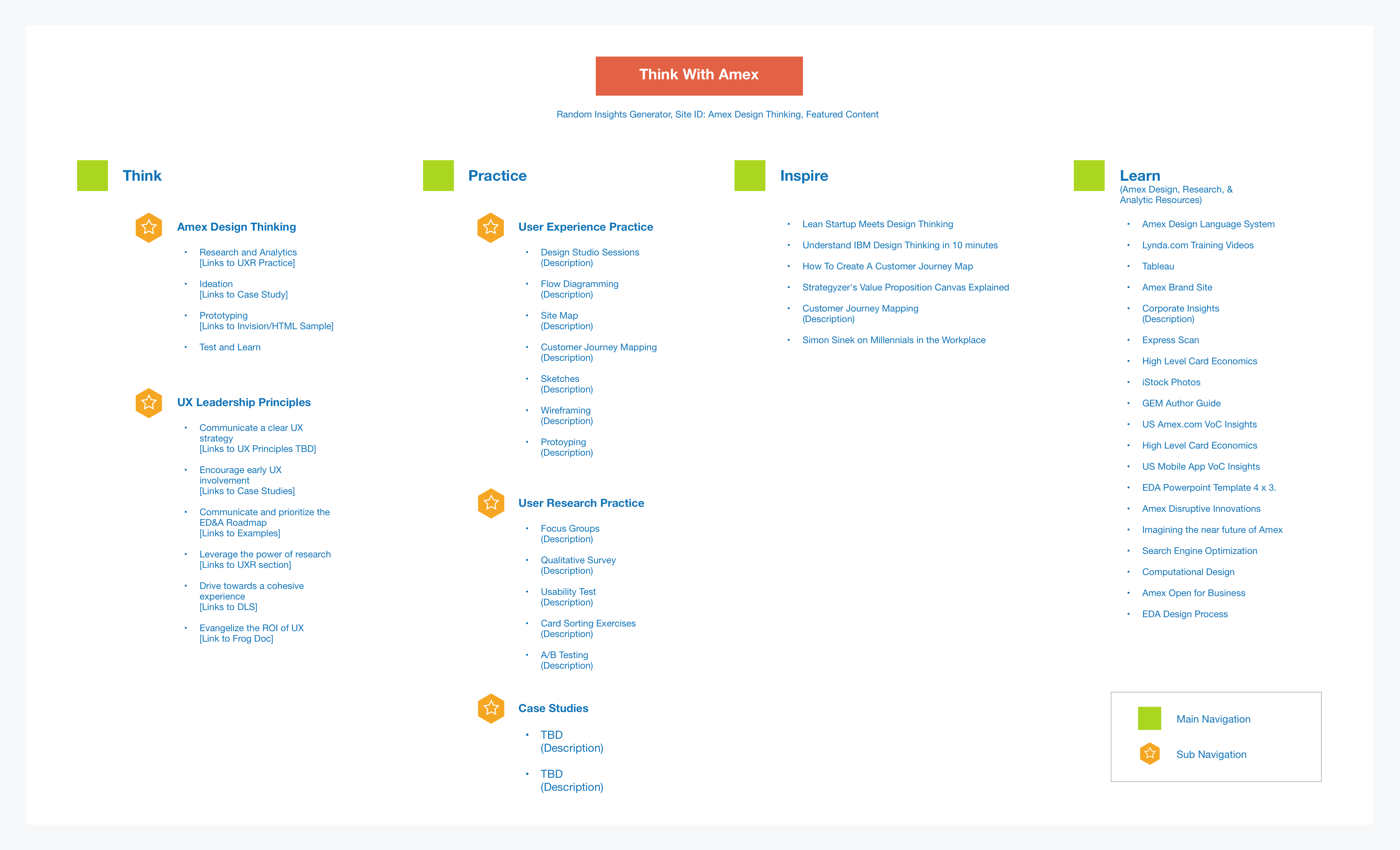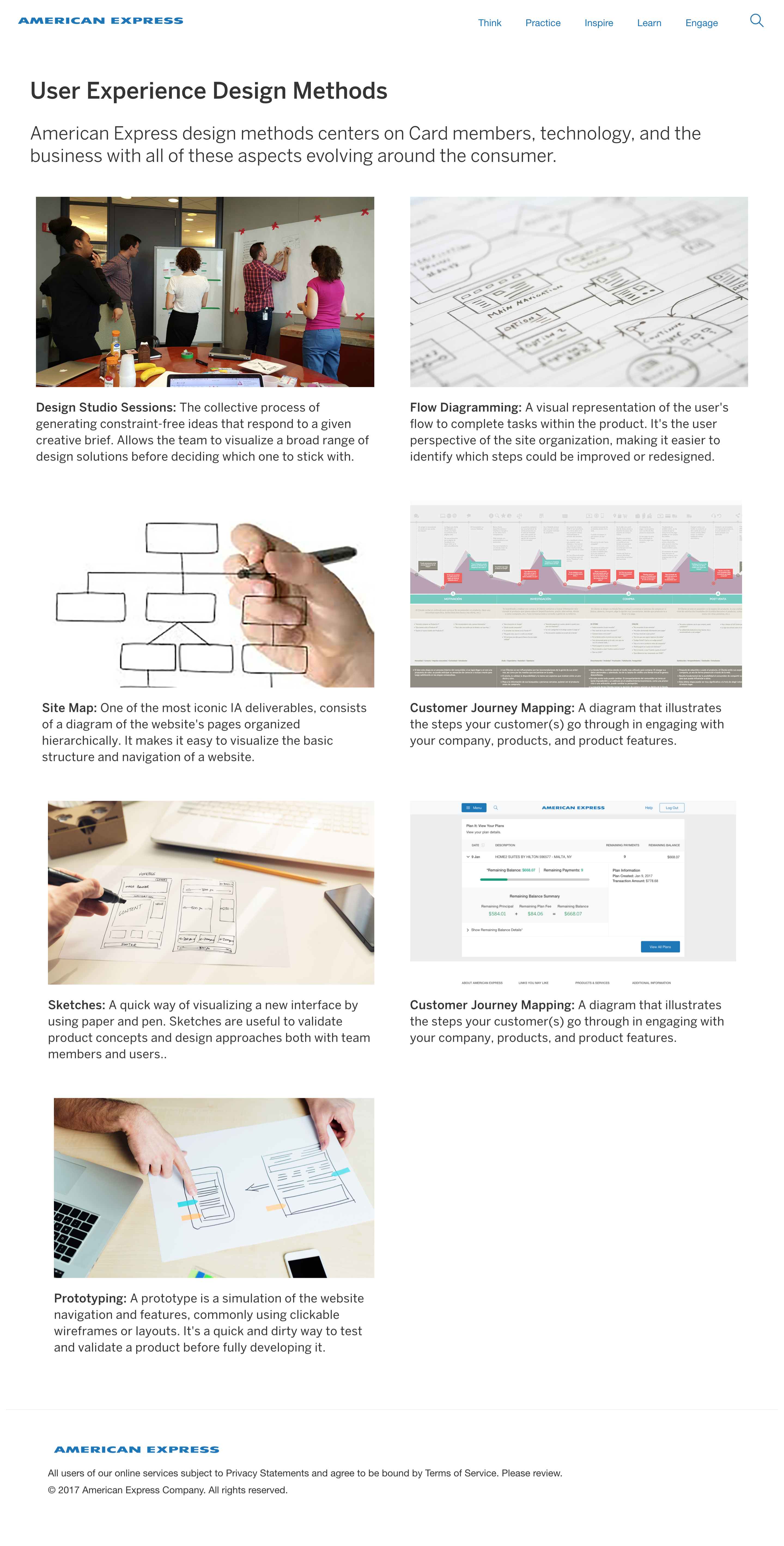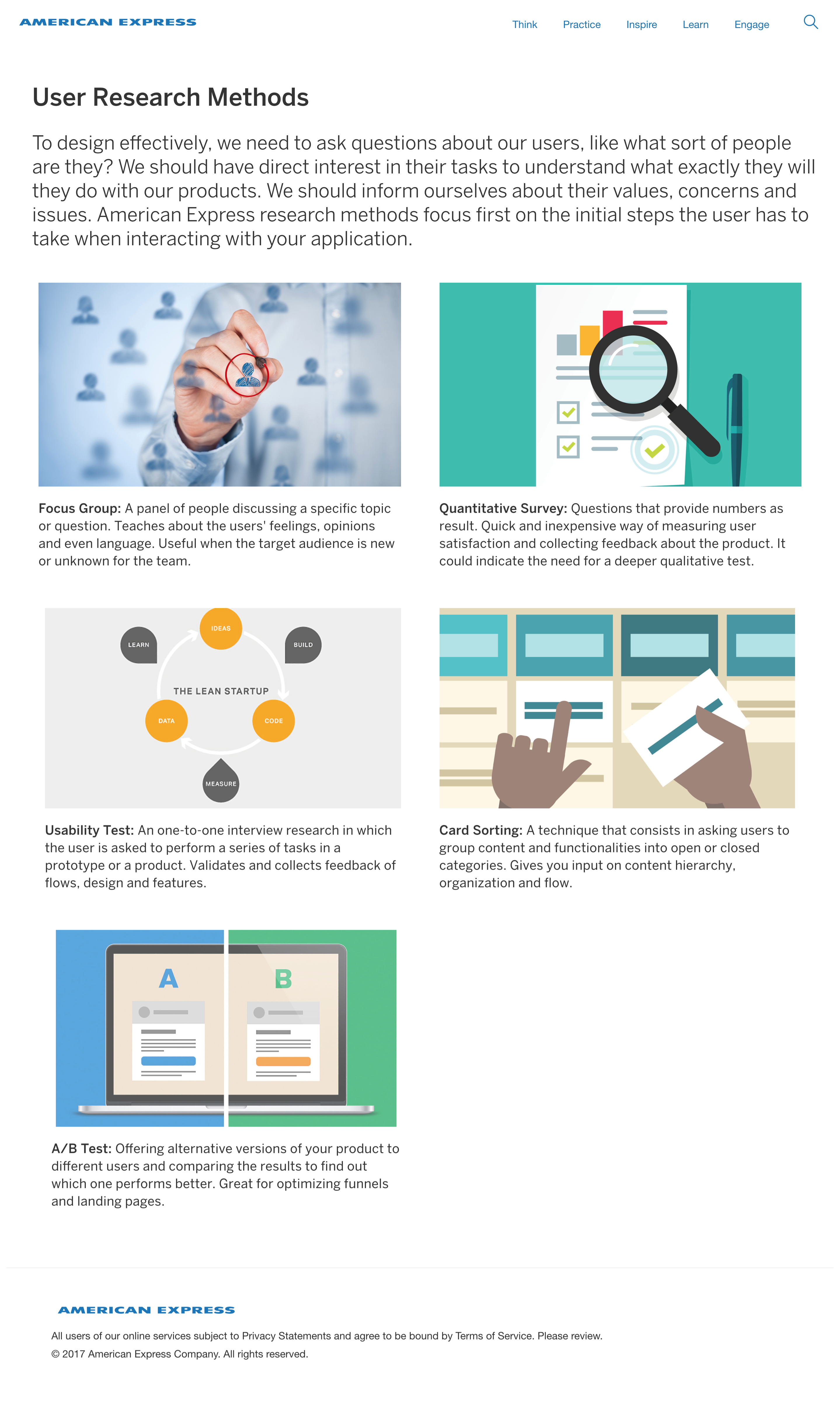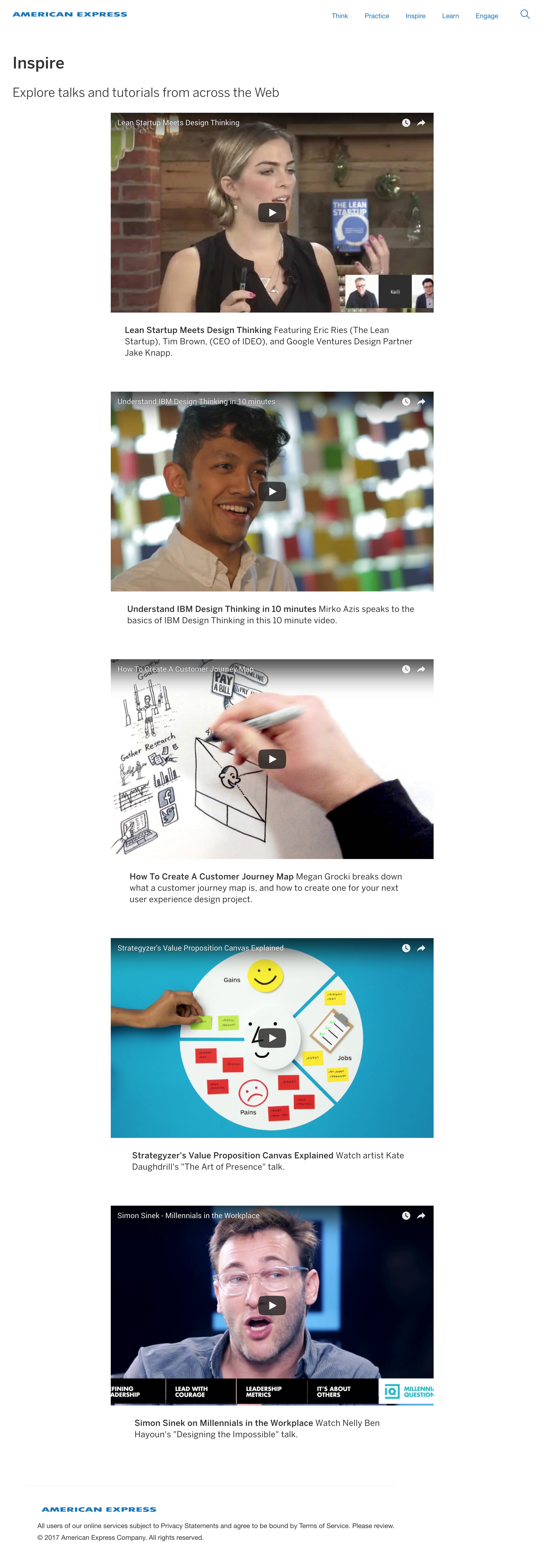Thought Leadership
Launch PrototypeData driven design through thought leadership.
The thought leadership site was our way of promoting data driven design within our design teams by providing quick access to enterprise data and analytic resources. We wanted a centralized location for resources that exist in disparate places throughout the enterprise. The site also served as a guide on how to engage with the design team for our strategic partners.
The Challenge
The in-house design team at Amex is only 6 years old. Amex has been in business for over 160 years. Part of the challenge of being in a company of over 10,000 employees is connecting processes, roadmaps, and work flows between a constellation of business units and our design team. We wanted to create an access point for our partners to understand how to engage the design team. We wanted to provide a view into the methodologies we employ to solve problems. We wanted to show the value of engaging the design team early in the product lifecycle to define the customer need and strategic goals necessary to a successful product. We wanted the site to serve as a signpost to disparate sources of American Express customer data and site analytics. Access to data will promote a data driven designed product.
My Role
The design team was split up into groups or boats. Each boat was assigned one of four team efforts. Our team was the leadership boat, tasked to think through how to empower the designers into becoming stronger leaders. Our team was comprised of 2 UI designers, 2 UX designers, and 2 UXR experts. My responsibility was to capture content generated by the team into a Web site that I coded using our American Express Design Language System (DLS) as a framework. I worked closely with User Research to define the site map, content strategy, user experience, as well as front end development for the thought leadership site.
Collect Data
American Express has multiple data and analytical resources that are difficult to find since they exist under a multitude of departments.
Stakeholder Interviews
American Express has multiple data and analytical resources that are difficult to find since they exist under a multitude of departments.
Map the site

Our Practice
Our approach was to introduce our strategic partners with a list of methodologies the User Experience and User Research teams employ to define the product. We showcased methods of problem-solving so our partners can have a better understanding of what we do. We were keen on letting them know that design is not just comps and wireframes but also a list of creative tactics to help teams converge onto a viable product solution.

User Experience Methodologies
Showcase user experience methodologies used for problem solving.
- Customer Journey Mapping
- Flow Diagramming
- Site Mapping
- Affinity Mapping
- Rapid Prototyping
- Collaborative Design Sessions
- Hi and Low fidelity wireframing

User Research Methodologies
Showcase user experience methodologies used for problem solving.
- Focus Groups
- Quantitive Surveys
- sability Tests
- Card Sorting
- A/B Test

Inspirational Resources
A list of creative and inspirational resources curated by our design team.
- Lean Startup Meets Design Thinking
- Understand IBM Design Thinking in 10 minutes
- How to Create a Customer Journey Map
- Stratzenger's Value Proposition Canvas Explained
- Simon Sinek on Millenials in the Workplace
- Test and Learn

Amex Resources
Connect users with design, analytic, research, and data driven resources.
Random Quote Generator
I built a random quote generator to increase engagement with internal and external data and analytics. The quote generator displayed a new Amex insight on click of the Get a New Insight button. Each quote contains a link the will jump the user to a related analytical tool:
- Android instant apps will become a common trend in 2017.
- 6 of the top 10 most used mobile apps are messaging apps. Four of the top apps are owned by Facebook.
- Did you know $19,960 is the average Card member spend?
- As of the second quarter of 2017, Facebook had 2 billion monthly active users.

